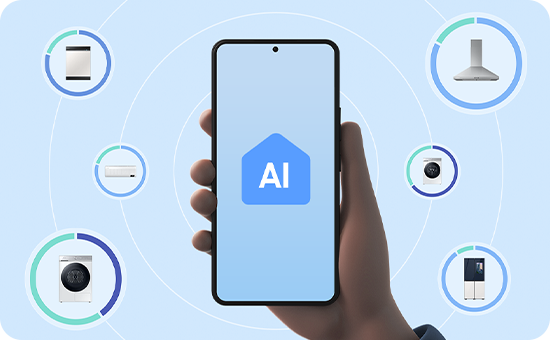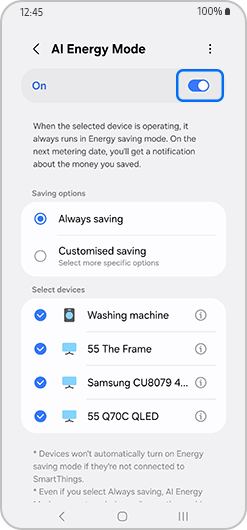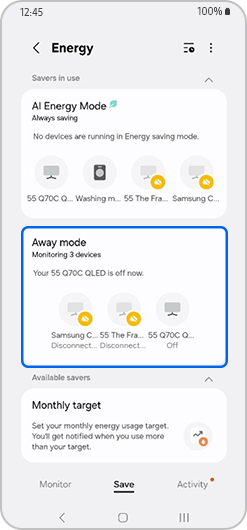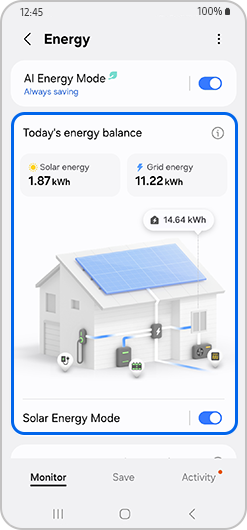How to use SmartThings AI energy saving features

SmartThings Energy Services integrate a range of AI features that monitor and control the energy consumption of your home appliances. With SmartThings, you can track the energy usage of your various devices, offering insights into which ones use the most power and ultimately helping you to make informed decisions about how to optimise your home energy consumption.
Before setting up any of these features, you must first follow these two steps each time:
This feature helps you reduce energy consumption based on your habits and preferences, without you having to manually adjust settings or constantly monitor each device. You can track which specific devices are using the most energy and when, enabling you to adjust how you use them to maximise energy efficiency.
Tap AI Energy Mode to activate it

Please note: The steps and processes seen in the screenshots may vary slightly depending on the app version, the devices you have paired and the smartphone you are using it on.
You can set energy usage targets, such as the maximum amount of energy you would like to use each month. Once this target has been reached, you will receive notifications warning you that you have exceeded the limit.
You can track energy consumption by devices and time periods, giving you detailed insights into which devices use the most power and when. With this data, you can identify times when your energy consumption is higher than usual and adjust your habits to save on energy bills.
To check the power usage of each product, tap Monitor, then tap Device energy usage.
To see usage by time period, tap Hourly, Daily, Weekly or Monthly.
To view carbon emissions, reductions and reduction rates by month and device, tap Carbon emissions aware.
Once the TV has been added, you can turn it into a Hub (this applies to all devices that support the built in IoT Hub function).
To do this, tap on the device, then:
With the Routines feature in SmartThings, you can programme certain devices in your home to switch on or off depending on whether or not you’re going to be at home. One convenient, energy-efficient feature is having several devices switch off when you leave the house.
Please note: Before following these steps, please ensure that the devices you would like to sync are paired with SmartThings.
Away mode allows you to set up energy usage notifications from your home while you’re away and remotely turn off devices.
Tap Away mode > Tap the device you’d like to turn on or off

With Today’s Energy Balance, you can check a wide range of energy data and flow charts, such as the amount of electricity produced, billed energy usage and battery state of charge:
Tap Today’s energy balance

Solar Energy Mode allows you to optimise solar energy and reduce energy usage by controlling heating and cooling systems:
Thank you for your feedback!
Please answer all questions.





























































